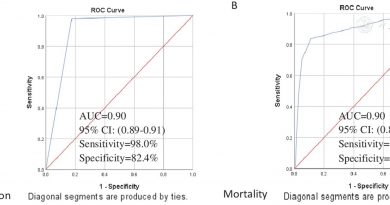Alcohol-related fatty liver disease symptoms: Early warning signs your liver is struggling
Emmerdale: Liv is hospitalised due to alcohol abuse
We use your sign-up to provide content in ways you’ve consented to and to improve our understanding of you. This may include adverts from us and 3rd parties based on our understanding. You can unsubscribe at any time. More info
The liver has the wonderful capability to regenerate and heal itself; but is yours sending out warning signals that it is finding it hard to remove toxins, including alcohol, from your body? Dr Minesh Khatri explained that fatty liver disease means there is too much fat stored in the liver. Alcohol can be a direct cause of this build-up of fat, which makes it harder for your liver to do its job properly.
When the liver becomes enlarged, one of the first symptoms you might notice is a vague pain or discomfort on the upper right side of the stomach.
As the liver swells in size, other symptoms can emerge, such as:
- Nausea
- Vomiting
- Belly pain
- Jaundice.
Jaundice is when the skin takes on a yellowish hue and the whites of the eyes have turned yellow.
Such warning signs are indicative of “alcoholic hepatitis”, which does require giving up the sauce.

“People who continue to drink alcohol face a high risk of serious liver damage and death,” warned the experts at the Mayo Clinic.
Other indications of alcoholic hepatitis can include a loss of appetite, fatigue and weakness.
Malnutrition is common in people with this type of fatty liver disease, as is a change in behaviour.
As toxins build up in the body, which are usually broken down by the liver, cognitive confusion can develop.
DON’T MISS
The simple and ‘free’ daily pratice to slow ageing [TIPS]
Supplement: The vitamin that increases cance risk [INSIGHT]
Diabetes: The 25p herb to lower blood sugar [ADVICE]
If you are presenting with any symptoms of alcoholic hepatitis, it is for the safety of your own life that you visit a doctor as soon as possible.
It is also advisable to seek support from a doctor if you “can’t control your drinking”, or would like help in cutting back on how much you do drink.
“Not all heavy drinkers develop alcoholic hepatitis, and the disease can occur in people who drink only moderately,” the experts stated.
Most people at risk of developing this dangerous condition would drink the equivalent of seven glasses of wine (or seven beers) daily for at least 20 years.

However, even for those who do not drink to that level, they are still at risk of the condition.
This is especially true if you are a woman, thought to be because of the way alcohol is processed in women, and if you are overweight.
“Studies suggest there may be a genetic component in alcohol-induced liver disease,” the Mayo Clinic experts added.
“Although it’s difficult to separate genetic and environmental factors.”

Am I drinking too much?
The UK national guidelines suggest that people drink less than 14 units per week.
Drinkaware said: “Many people don’t always know how much alcohol they drink and whether their drinking could have any impact on their health.”
Their alcohol self-assessment tool has been designed to identify if your drinking habits are putting your health at risk.
The tool is developed by the World Health Organisation (WHO) and is used internationally by medical professionals to check for alcohol harm.
Source: Read Full Article



